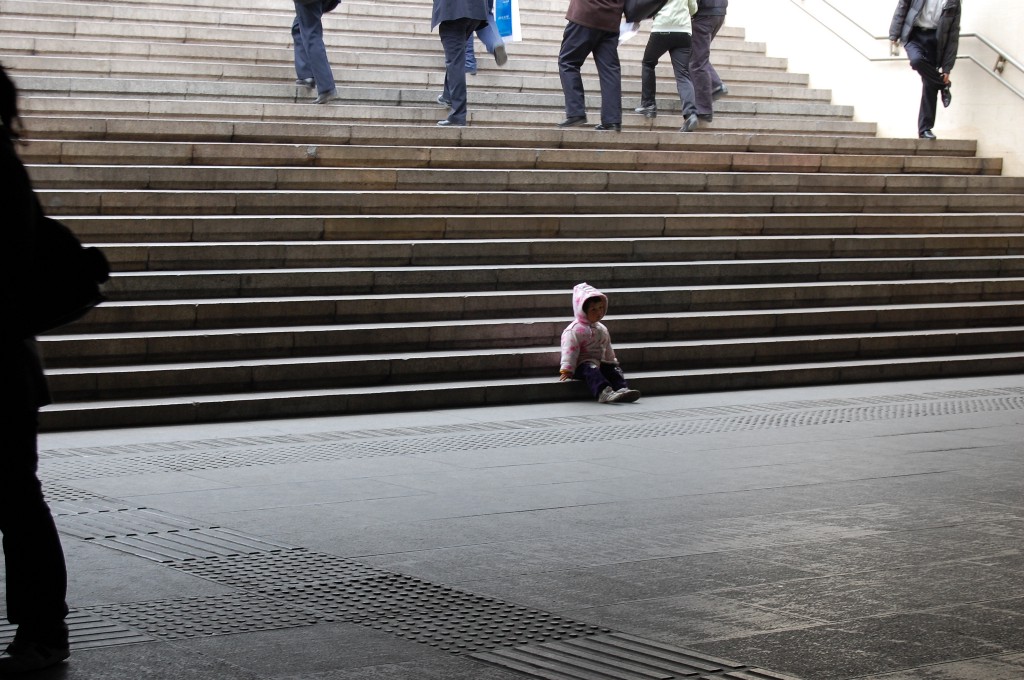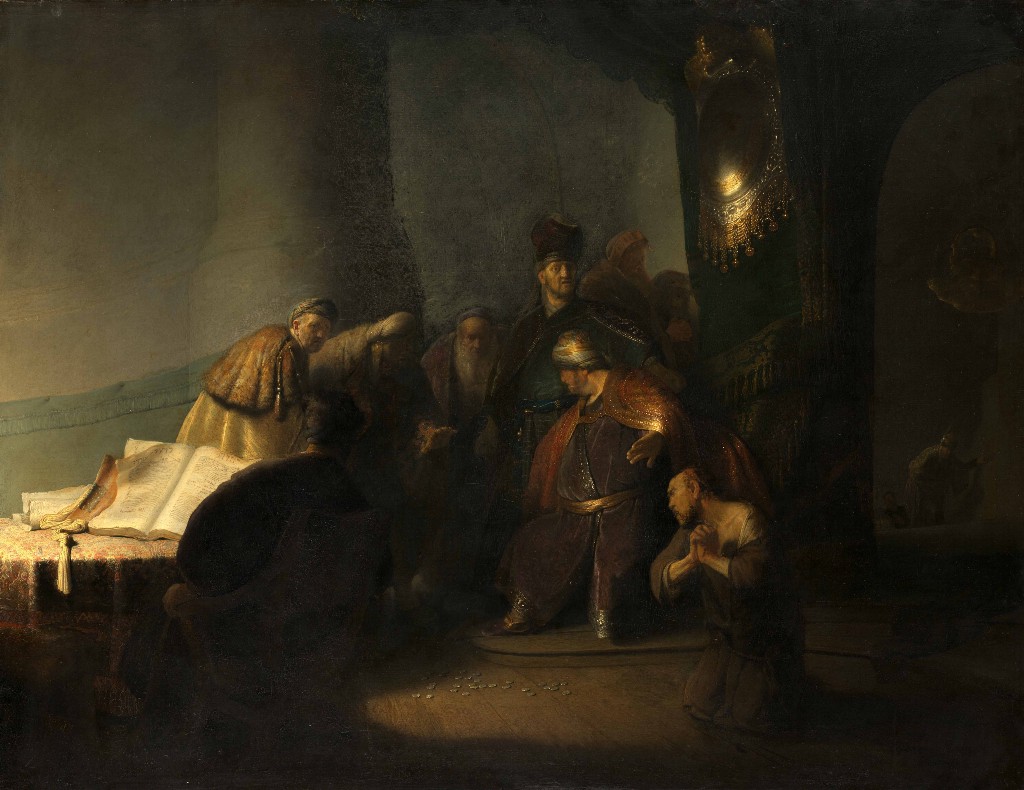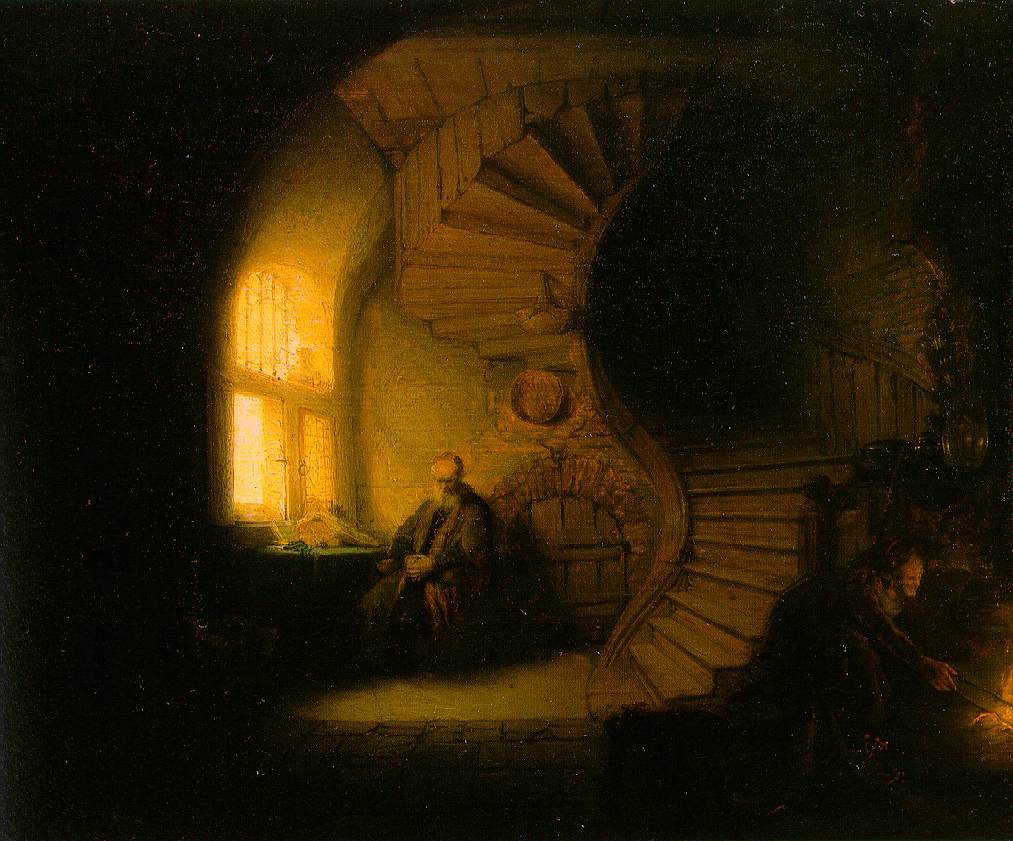Soundscan Surprises, Week Ending 6/30
Back-catalog sales numbers of note from Nielsen SoundScan.

The definition of “back catalog” is: “at least 18 months old, have fallen below No. 100 on the Billboard 200 and do not have an active single on our radio.”
This week’s list is the Who? edition, inspired by the best semi-newish podcast, “Who? Weekly,” hosted by Awl pals Lindsey Weber and Bobby Finger. Music-world Whos are fairly subjective, and relative to your taste in music, so thanks in advance for not shaming me for not knowing about the country supergroup, “The Highwaymen,” a Them made entirely of Whos (Johnny Cash, Waylon Jennings, Willie Nelson, and Kris Kristofferson).
5. AVENGED SEVENFOLD HAIL TO THE KING 6,919 copies
“An American heavy metal band from Huntington Beach, California, formed in 1999,” according to Wikipedia. Their latest album is the soundtrack to the video game inspired by their logo and mascot, Deathbat.
75. 2CD SET COUNTRY ROOTS OF COUNTRY MUSIC 1,646 copies
Mostly Thems in the country-music world, but a “Various” compilation selling that many copies is impressive, and I doubt you knew who Faron Young was.
139. JOBE*KARI MAJESTIC (LIVE) 1,232 copies
A “well-respected worship leader,” also known as a contemporary American Christian music singer.
107. SWINDELL*COLE COLE SWINDELL 1,376 copies
Full name Colden Rainey Swindell, he’s a country singer-songwriter who’s written hits for Craig Campbell and Luke Bryan.
114. THREE DAYS GRACE ONEX 1,313 copies
A Canadian alternative rock band. No apostrophe!
186. LEVERT*GERALD BEST OF GERALD LEVERT 1,038 copies
A late-eighties/early-nineties R&B singer, son of Eddie Levert, lead singer of the O’Jays. They sang a nice little duet together once.
(Previously.)
Tomutonttu, "Katukissan puhe"
How hot will it be today?

I don’t know what is says about how badly beaten I was by winter that I remain, here in July, dazzled by that fact that there is still full-day light at 7:30 in the evening, but I took a train last night at around seven and when I emerged 30 minutes later and saw the sun shining as bright as the afternoon it might have been the best part of my day. That said, now that we’re at the center of our first heatwave, summer’s charms are bound to fade. How hot will it be today? Hotter than yesterday, but not as hot as tomorrow. The only way to get through it is to not look at Twitter. That is not a heatwave-specific tip, by the way. I am just saying Twitter is terrible and not looking at it is the smartest decision you can make whatever your situation may be. Anyway, I know nothing about the music below, but it’s incredibly enjoyable in its energetic, plinky-plonky way. Do have a listen and enjoy.
New York City, July 4, 2016

★★★ Someone in fact had put out or kept out a pair of American flags, to flop back and forth now and again in the sunlit front of a shadowy balcony. The four-year-old stood with his wiffle bat in the shade in the home-plate corner of the playground, and explained to the glare-stricken pitcher that the shade was what he enjoyed about the game. When the one-on-one ballgame, or the ball-chasing part of the ballgame, palled, there was the climber and a fine noon breeze blowing through it. In the early afternoon, there was a cookout going on, with grills and a helium tank, inside a garage doorway. A dog lowered its head to snap at dry leaves blowing along the sidewalk. The Sheep Meadow was full but not overcrowded; to the north, lines stretched out the restroom doors and the cafe. The open space on the way into and out of the Park was hot with a dusty manure smell. The afternoon grayed and the air through the windows lost its early freshness, till it was time to shut it out and chase its lingering effects with the air conditioner. Eventually there was rain, the day’s solution to the problem it had just created.
The Mysterious Afterlife of Holiday-Themed Baseball Jerseys
What happens to them the other 364 days of the year?

It’s sad to think about what happens to objects when nobody wants them anymore. Like a soiled teddy bear left in a box marked “FREE — PLEASE TAKE.” Like the bike you left chained to the bike rack outside of your friend’s apartment building five years ago. Like something else. What happens to these objects? A good question. Maybe the once-loved teddy bear is eventually thrown away. 🙁 Maybe the always-somewhat-disliked-out-of-fear bike was still there the last time you looked, and now you just try not to think about it. 🙁 Something else. 🙁 But what about holiday-themed baseball jerseys?
A good question.
If you’re an observant viewer of baseball, you might’ve noticed that sometimes on a holiday the jerseys are a little different. On Mothers’ Day they’re pink, reminding us of a mother’s breast cancer. On Memorial Day they’re camouflage, providing the added benefit of stealth. On yesterday they’re flag.
When you think about what happens to normal baseball uniforms you think they’re probably washed, and then the player wears the uniform again. Right? Or maybe, like in Catholic school, the player has two skirts, or uniforms, and rotates them when necessary. But what about a holiday jersey, since the teams only use them the one time? That’s the good question we’re focusing on today.
My guesses:
- Cut into scraps
- Stuffed like dummy
- If a player has an especially good holiday he frames the jersey
- If a player has a bad holiday, or the holiday reminds him of something bad like if someone he knows died that day, he doesn’t frame it or even keep it at all (!)
- Thrown away 🙁
What’s your guess? Just kidding.
Rather than wonder about the fate of holiday-themed jerseys forever like some asshole, I reached out to Matthew Gould, VP of Corporate Communications for Major League Baseball, and asked him about what happens to the holiday-themed jerseys. (If you know the answer at this point, please do not say it out loud in case anyone around you would like to uncover it naturally in this post.) (“Can I just mouth the words?” No, please do not mouth the words.)
Here it is, from my new friend Matthew:
Like all uniforms, holiday caps and jerseys (such as Memorial Day) are property of the Clubs that wear them. Those clubs make the decisions on what happens to them after the games are played. The caps and jerseys can be auctioned for charitable purposes, provided to the players and/or retained for historical purposes. Hope this helps. Anything else, please let us know.
The Mysteries of Brooklyn
A meditation on memory in verse

Last night on Court Street in Brooklyn so fair
I saw a man with his arm in the air
And stuffed in the fist that he held to his face
A grayish contraption connected in place
By a long silver coil that wrapped like a thread
From a box on the sidewalk right up to his head
Into this odd gadget he shouted and yelled
But then he’d go quiet, his voice somehow quelled
By a sound coming out of the top of the thing
Which I swear right before I had heard give a ring
I couldn’t quite place it, this talking machine
Though it seemed in the past it was something I’d seen
I’m certain this object I’d previously known
I was sure if I thought I’d flash back on my own
And I would have stayed longer to try to recall
But the old stuff in Brooklyn, you can’t place it all
So many strange customs in vintage detail
Then I spent thirteen bucks on a juice pressed from kale
The Cure for Loneliness isn't People, it's Animals
And other answers to unsolicited questions.
“Jim, I’m lonely! What should I do?” — Lonely Lenny
I feel you, Lenny. Even though loneliness is an illusion like most of the other ubiquitous human emotions (love and happiness, chiefly) we think we are really feeling it. And really that’s the problem. Like the placebo effect, when we believe that vodka is actually helping to cure our social deficiencies, we feel something and believe it to be loneliness and therefore try to cure the loneliness. And loneliness is one of the most elusive afflictions to cure. Sadly, being with people clearly isn’t the cure for loneliness. In fact, in general, people are not at all the solution to any of our problems, people are the problem. And the introduction of more people into your life will make you yearn for loneliness again. It is a vicious round shape, a Tour de France bicycle tire forever spinning, until we are dizzy and miserable.

Sometimes, not all that drunk or anything, I will send an ex a midnight email. Upon awakening, I will be horrified. Why did I reach out to this person in the middle of the night? Because I was lonely? Probably not. I was probably just bored and horny. Bored and horny can easily be confused for loneliness. Or bored or horny. I most likely yearned for attention. That is also different than lonely. My first reaction is to delete the email from my sent mail and never contact that person again. My loneliness was not cured. It was not loneliness in the first place. But my curiosity about other people was sated.
Some people really like hanging out with other people. But then why are we still always on our phones? Are the people we are already with not nearly enough for us? How many people will it take to fill the hole in ourselves? People are incidental to the hole. You could stuff that hole with anything: books, archery, Netflix, Oreos. People are nicest when we pass them as icebergs pass each other in cold water. Hello, nice to see you, how are you, goodbye. This is what I like about being a cashier at a bookstore. I get to have millions of tiny, inconsequential interactions with people. They are buying Doritos or 1984 by George Orwell. They smile briefly. And that’s it. Maybe I see them tomorrow, maybe I never see them again. We talk briefly about the weather. We make a joke about sports.
I live with Ben, so loneliness is generally at bay. Just having someone else around all the time will make you wish to be alone. Ben is a much better companion than I am. He always has delicious cheese somewhere, hidden from me. He is great at hiding things. We have a relationship like Dr. Smith and the Robot on “Lost in Space.” Why did Robinson Family not throw Dr. Smith off of the Jupiter 2 for betraying them so many times? Because he was the best character. You can’t get rid of the best character. Loneliness is not often my problem. My problem is that I can’t find the cheese.
But I do sometimes yearn for what I imagine is human connection. And so I got a shrink. I see her once a week. She has to listen to all my problems and appears to mostly be on my side. It really is the best human relationship possible.

When that relationship wasn’t enough, I got one fish. And then another. I watch these betta fish in their separate large Container Store containers swimming about. Lying on fake leaves. Holing up in fake floating logs. If you put them in the same container, they will tear each other apart. Or make more betta fish and then tear each other apart. But I watch them. And speak to them. And ask them how they are doing. It’s pretty nice, Lenny. You can get cats and dogs, dogs are kind of needy and go crazy if you leave them alone for too long. Dogs truly do feel loneliness. When you leave they never know if you are coming back. That is true abandonment, they are bereft. Cats, on the other hand, don’t seem to really care about anything until it is 5:30 A.M. and they want food. Any other time you feel abandoned.
One of the best things I did to combat loneliness, Lenny, was feeding the birds. Ben had gotten his shoulder operated on. I thought he might feel lonely in bed recovering. So I picked up one of those bells made of bird food and put it on Ben’s air conditioner. Nothing happened for a week or two. I felt like maybe birds didn’t know and would never figure out that these bells were made of food! But suddenly the bird word got out. It was so gratifying. It must be like how it feels to open a successful restaurant that’s always crowded and everyone is always happy in. We had to open another location around the corner on the air conditioner in my room. Bigger birds started showing up. We had grackles, robins, some jays. And then pigeons. And I felt ebullient. Ebullience, however, is fleeting. The downstairs neighbor complained about all the bird poop and we had to close up shops. That did make me feel lonely.
The other solution may be just hitting your hand with a hammer. You stop feeling lonely almost immediately and then really focus on the problem of your hand.

“I have been watching soccer and I don’t get why these guys are always pretending to be injured. What is up with that?” — Confused Kate
The soccer this summer has been wonderful. Between the Copa America tournament and the European Championships, we’ve been treated to some wonderful matches and some incredible displays of skill. And not just the goals. I would argue that flopping is at least as great a skill as putting a ball in a goal. I mean, just try to make it look like you’ve been injured. Rolling around in the grass like you’ve been shot in the calf with a bullet. They shouldn’t just give out Cups at the end of soccer tournaments, they should give away Emmys for TV acting.

Soccer is a pretty boring sport. You can get up in the middle of a match, watch some porn in another room, take a short nap and a shower, and come back into the TV room when you hear the announcers’ voices get all excited. Rewind to see the goal you just missed. The only other thing I watch for is the injury play-acting. It’s a dramatic and essential part of the game. Try to enjoy it, Kate. The skill it takes to be slightly tapped in the shin and to act as if someone has stabbed you in the eye. If you’ve been kicked in the leg, why are your hands on your face? No one does this. They have these magnificent shin guards that will protect them from being hit in the leg with a shot put. Why do they act as if the slightest tap of another player’s shoe will send them falling, falling, falling? It is a ballet of lies, a dance of untruth. It is the most fascinating part of this banal sport. Soccer is better played in our heads as we imagine how wonderful a match will be throughout the week leading up to the match. What normally happens in a match is pretty boring, a lot of mistakes, and plenty of pretending to be injured. Enjoy the dance. You’ll be able to chat with all your animal friends about the outcome!
Jim Behrle works at a bookstore and lives in Jersey City, NJ.
Arca, "Sin Rumbo"
Fuck driverless cars, Science should be focusing all its energy on figuring out how we make every weekend a three-day weekend.

When I was in Kindergarten one of the girls in my class got sick and was out for a week or so, which is a really long time in Kindergarten. I remember the day she returned to school her mom brought her into the classroom and she cried and cried and cried because she didn’t want to come back. The rest of us just stood quietly on the other side of the room, probably thinking the 5-year-old version of “there but for the grace of God go I” or whatever. I’m sure you remember what a weird transition it was when you first had to go to school all day Monday through Friday; having a brief reprieve but then being forced back into it must have been horrible. This is a vivid memory that has stuck with me all these years, but never more so than after the Monday of a three-day weekend. We’ll survive it, I guess, but I wouldn’t blame anyone if they had to do a bunch of crying at the beginning to get through it.
Here’s something new from Arca. Enjoy.
New York City, June 30, 2016

★★★★ Tilting open the blinds brought in a flow of cool, fresh air. Most ways the gaze turned outside, it met something giving off a blinding flash. It was hard to point the camera at the sky without filling the lens with flare. On the passage out of the shade, a warm ray of sun went straight into one ear. From the N train, the clouds over Manhattan were smoky and backlit. The walk from the station to the river was long but never strenuous. A breeze stirred on the way under the great concrete supports of the elevated railroad, and the light shone through the seed heads of the grass. People stood for the national anthem facing into the blinding west; if there was a flag it was lost in the glare. The river was flowing out at a furious pace, silver and choppy, in front of the little pink sunset. The night wind from the south steadily carried away the smoke as fast as the fireworks could make it.
Karaoke Bar, North Brooklyn

When I watched you sing Led Zeppelin’s “Rock And Roll,” I had to privately concede that it had taken me up until this moment to actually understand what karaoke was. Everyone else in the room knew what it was because everyone in the world knows what it is. You, however, enlightened me to the obvious: that karaoke is a situation in which “nailing it” has very little to do with the correct words and pitch. That it’s not the getting it right, but the doing it right. We’re talking, of course, about the giving of no fucks. The sound of one hand googling the etymology of “karaoke” is no path to the nirvana of #dgaf. But anyway, yes I googled it and was happy to find it means “empty orchestra,” which seemed rather poetic, especially because the room was full.
It was the birthday party of a sociable musician and every time the door of the basement room opened, it led in a fat yellow slab of light and a fresh burst of people and I’d look up and see if I knew them, and usually I didn’t, and I’d smile, because it’s quite daunting, to walk into a crowded room, mid-song, and have people turn and look at you. You however, walked into the party like you were walking onto a yacht. Or at least, like you were walking off Fort Tilden beach. I think your hair was wet and I’m certain you had no shoes on, just — I imagined — some sand between your toes. You were wearing a floral two piece bathing suit, one of those winsome, fifties-ish ones with the high-waisted briefs, and over this, a matching mini kimono, untied. We’d just had “Dancing in the Dark” and you made me want to check my look in the mirror, change my clothes, my hair, my face.
I had already, under a kind of duress of marital obligation, risen to my feet to accompany my husband in a rendition of “The Thong Song,” that famous romantic duet for the ages. Struggling to bring conviction to my ass-shaking, I watched Sisqo bounce, crab-like and rapacious down a beach demanding to see women’s underwear and thought what a sexual-harassment-lawsuit-in-the-making of a song-s-song-song-song it was. 1999: a different time.
After he sings, She had dumps like a truck, truck, truck/ Thighs like what, what, what/ Baby move your butt, butt, butt he just announces, I think I’ll sing it again. And then proceeds to do just that, several more times! That’s confidence. But your confidence was even mightier. You were next up and shit damn you were ready to Rock and Roll. You grabbed the mic, hopped into a wide-legged stance and Robert-planted yourself there like some floral toreador. When you launched into the tumbling opening line of “It’s been a long time since I rock and rolled” you were sloppy and flat and shouty, by which I mean, you were perfect.
Three Ways to See a Painting
Rembrandt’s first masterpiece, and how we see it.

1. I’ve always loved Rembrandt. So after reading a review of Judas Returning the Thirty Pieces of Silver, now at the Morgan, I made a plan to see it. The canvas has never before been exhibited in the United States — it’s in a private collection of Constantine Phipps, 5th Marquesse of Normansby, so it’s usually not available to the public.
A student of mine, Jackson Sabes, met me at the museum. At twenty-three years old, Jackson is the same age Rembrandt was when he painted the picture. Standing in front of the painting, I saw a small horizontal-shaped canvas with mostly close-value earth colors, strong chiaroscuro lighting, smooth paint-handling, and a circular composition. It looked profoundly gloomy. Jackson said he saw Judas on his knees with clenched hands; a group of men — Pharisees — to one side; gold coins in the middle; and to the left, a book with Hebrew letters that he tried and failed to read. Connecting image with title, he remembered the Gospel of Matthew 27 and suggested we go into the lobby for better reception. He read from his iPhone:
When Judas who had betrayed him, saw that Jesus was condemned, he was seized with remorse and returned the thirty pieces of silver to the chief priests — He said, “I have sinned for I have betrayed innocent blood.” The elders respond, “What is that to us? That is your responsibility.” So Judas threw the money into the temple and left. Then he went away and hanged himself.
Rembrandt had chosen the moment after the coin throw. Since this wasn’t a commission, he could have chosen anything. Rembrandt took this theatrical moment, the big dark moment on stage for his first serious picture. It was also a story that most of his viewers would have known.
You see it differently as a painter. I know zero of the Gospels, and I sort of glaze over subjects. I’d have noticed the tortured look, probably seen the little coins in the canvas center, but known nothing about the story, including the imminent suicide.
Constantijn Huygens, connoisseur and poet, wrote about the painting right after seeing it at Rembrandt’s workshop. The original Latin manuscript is in the exhibition:
The gesture of that one despairing Judas . . . that one maddened Judas, screaming, begging for forgiveness, but devoid of hope, all traces of hope erased . . . his gaze wild, his hair torn out by the roots, his garments rent, his arms contorted, his hands clenched until they bleed . . . Even as I write these words I am struck with amazement. All honor to thee, Rembrandt!”
Roger Fry — the art critic, painter, and second Metropolitan Museum curator — developed the theory of Formalism. In a 1913 letter to his Cambridge friend G.L. Dickinson, he wrote, “I want to find out what the function of content is and am developing a theory… that it is merely directive of form and that all the essential aesthetic quality has to do with pure form.” In 1924, he expanded this to, “the emotions resulting from the contemplation of form were more universal (less particularized and coloured by the individual history), more profound and more significant spiritually than any of the emotions which had to do with life….” He believed “that the contemplation of form is a peculiarly important spiritual exercise.” Virginia Woolf quoted this letter in her Fry biography.
Considering pure form — color, shape, texture, placement, and scale — will disregard iconography. His friend Clive Bell came up with a catchier phrase, “Significant Form.” And that’s how I’d been trained to see. Think of everything that came from this: Pollock and Rothko, and the fights over abstraction versus subject matter. From this small observation, from this letter: whole careers, my career too, the careers of critics and magazine founders and anti-magazines.
When I was Jackson’s age, my professors told me that subject matter was déclassé — only philistines, viewers not astute enough to wing it on form and color alone, stooped to consider the painting’s subject. This was the gospel of the second half of the modernist century. A 1960 essay by Clement Greenberg called “Modernism,” which was influenced by Immanuel Kant, Fry’s writing on Formalism, and late nineteenth-century French painting, particularly Manet, claimed that flatness was all. This meant seeing the picture whole.
Subject matter was just illustration. A painting instructor making a chilly reference to illustration — to someone like Norman Rockwell, or Andrew Wyeth — was the kiss of death. Rockwell’s pictures often showed the cute, and the freckled, adoring dogs, families sitting down to late December meals. They were everything the painters of the Pollock generation and after thought American culture had ground and motored through and left behind.
But seeing changes. A few months ago, Manhattan’s West 103rd Street was named after Rockwell. And the Met, that bastion of correct taste, has Rockwell’s Expressman, a 1925 magazine cover in one of its galleries. Rockwell’s Saying Grace — the epitome of Saturday Evening Postness, of what Nabokov called poshlust (and Nabokov has a whole essay about Rockwellism) — sold at auction in 2013 for forty-six million dollars.
Did knowing the subject matter help me see Judas Returning the Thirty Pieces of Silver? Fry would have opined that feeling is solely in the shape — the color and arrangement of objects on a flat two-dimensional wood panel. Knowing the story made me start seeing each thing separately, moving away from painting qua painting. Text, the story of the subject, was a distraction. It’s not about Judas and the silver: it’s about Rembrandt making the painting, and you seeing the painting. It’s an exchange; the subject is the occassion.

Jackson, three generations after me, sees differently. When he was in high school Andy Warhol, with his indelible connection to subject — Elvis Presley, Liz Taylor, the collector Ethel Scull — was, the great artist of the time, sometimes even mentioned in the same breath as Rembrandt. And more recently, art star Jeff Koons, whose Trumpian aesthetic could fit in well at Mar-a-Lago, is completely wedded to subject. (He was also married to Illona Staller, a former porn star.)
Jackson said simply, ”I really need to get my shit together. Rembrandt was great at twenty-three. I saw the van Dyck exhibit last week, that self-portrait when he was seventeen was amazing. And I’m only like on my fourth painting.”
2. Times change, seeing changes, what a culture values changes. Rembrandt doesn’t change much.
Looking at painting is of course dependent on seeing. And how we see is largely based on style, which changes with decades. These days in museums, you see wall labels — now we write about iconography and the story. Sometimes they mention what subjects are wearing. In the middle of the last century, what ran on the wall was a painting’s technique, the color and form, and how the picture fit into a whole career.
As a child, I believed what we saw was pretty standard. Your vision got tested every school year, and if you had 20/20, you didn’t get glasses. Now I know that even if your vision is perfect, you still might not see well. We’ve learned the whole thing is subjective: eyes linked by wiring (that could be faulty) to brains that could be faulty too.
I attempt to teach painting students to see. Only then is it possible to paint. Often what’s called seeing is really hoping — i.e. that your idea came across, that the picture is as good as you believe it to be. That your classmates and strangers will like you because of it. In the nineteen-sixties, German painter Josef Albers wrote that teaching art “was not a matter of imparting rules, styles, or techniques, but of leading students to a greater awareness of what they were seeing.” Albers said his goal as a teacher was “to open eyes.” In an 1844 essay “Experience” Ralph Waldo Emerson wrote, “Thus inevitably does the universe wear our color. As I am so I see.”
Through brain imaging, we’ve learned the brain and the eye are basically one. Visual information passes through pupils to the retina, then travels to the brain for processing. Which means also that seeing is based on training and interpretation; ultimately it’s an expression of the self. Emerson was right — what you see is who you are.
3. Marcel Proust, for me a prose Rembrandt, was also a great admirer of our painter. (His other favorite was Vermeer.) In his À la recherche du temps perdu Proust brings up several Rembrandt paintings. In À l’ombre des jeunes filles en fleur, the narrator is riding in an old-fashioned elevator with the lift boy (translation mine):
It was now he who remained without receiving responses in the short crossing during which he conducted the bow through the hotel, hollow like a toy and which deployed floor after floor around us, its branching corridors in the depth of which a so-velvety light debased itself, reduced the thickness of communicating doors, the steps of interior stairs, which were converted into that amber gold, inconsistent and mysterious as dusk, where Rembrandt sometimes silhouettes the support of a window or the handle of a well.
Proust must have known The Philosopher in Meditation from Louvre trips. With its small scale, horizontal format, distant view perspective, and chiaroscuro lighting it hearkens back to the Judas from three years before. But it’s quieter, warmer and sans religion.

Proust also wrote a fictional account of ninteenth-century aesthete John Ruskin visiting a Rembrandt exhibition in Amsterdam. Proust took this trip himself in 1902 to see the 125 Rembrandts. (Having died in 1900, Ruskin couldn’t have.) He imagines Ruskin going through the exhibition with his housekeeper (in Proust, there’s always a housekeeper). He experiences “a sort of golden medium, as if they had been painted in a similar light.” Proust extols the painter with a famous definition of art:
Thanks to art, instead of seeing one world only, our own, we see that world multiply itself and we have at our disposal as many worlds as there are original artists, worlds more different one from the other than those which revolve in infinite space, worlds which, centuries after the extinction of the fire from which their light first emanated, whether it is called Rembrandt or Vermeer, send us still each one its special radiance.
Judas Returning the Thirty Pieces of Silver has both the timely and the eternal. It transcends 1629 in Leiden, Holland, and rewards our viewing: that’s when a paintings lives, gets free and can time travel. Think of all the eyes that have looked upon this picture and, by looking, have added to it.
How different everything was three hundred and eighty-seven years ago when Rembrandt painted this picture. All that time stretching between the Leiden workshop and our quick moment in time — from a world where there was no electricity, no cellular phone service, no AR-15-style semi-automatic, to the moment in June when the picture took its spot on the wall of the Morgan Library and Museum, in the city of New York. Someone hung it, and someone walked away. As Fry said it’s spiritual. For me it’s the religion of art.
Pat Lipsky is a painter and writer. She has recently completed a memoir, Art: A Disillusioning. Her paintings are in 23 museum collections, including the Whitney, Houston Museum of Fine Arts, the US Embassy in Kabul, Afghanistan, US Department of State, and the Hirshhorn. She’s had 29 one-woman exhibitions.
